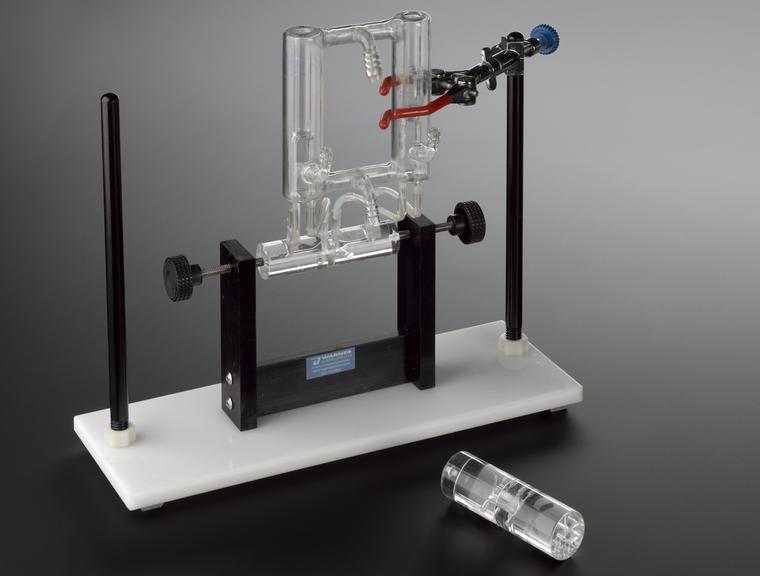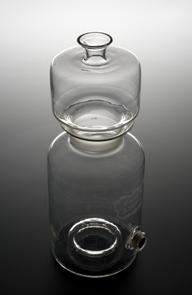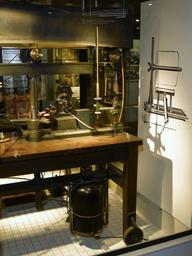

Ussing chamber
- Made:
- 2012 in United States








Ussing chamber, Wingate Institute, made by Warner Instruments, United States, 2012
Neurogastroenterologists Madusha Peiris and Ashley Blackshaw used this equipment as part of an obesity study conducted at Queen Mary University of London. Their research explored mechanisms of nutrient sensing in the gastrointestinal tract, and how they can be manipulated to reduce food intake in obesity. Studies involved sending “express parcels” of different foods across pieces of mouse and human small intestine in the Ussing chamber, with the aim of stimulating a ‘full’ signal in the brain. They demonstrated that fats and proteins trigger the release of hormones via sensors in the gut, which in turn curb appetite and cravings.
The Ussing chamber was invented in 1946 by the Danish biologist Hans H. Ussing as a means to understand the mechanism of active ion transport (specifically NaCl or sodium chloride) across an epithelium – a layer of cells lining hollow organs and glands.
Details
- Category:
- Laboratory Medicine
- Object Number:
- 2016-83
- Materials:
- glass
- Measurements:
-
overall: 560 mm x 350 mm x 124 mm, 1.5 kg
- type:
- laboratory apparatus
- copyright:
- Wingate Institute of Neurogastroenterology
- credit:
- Wingate Institute




